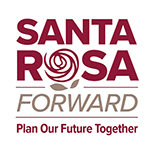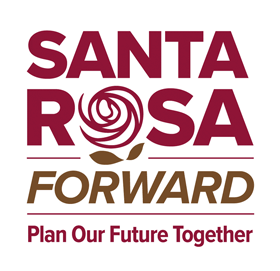Greenhouse Gas Reduction
Greenhouse Gas Reduction Strategy Documents and Materials
- Vulnerability Assessment
- Greenhouse Gas (GHG) Inventory Memo
- Greenhouse Gas Reduction Strategy Update to Climate Action Subcommittee Presentation (Dec 2022)
- Climate Action Subcommittee Meeting Recording (Dec 2022)
Note: The Greenhouse Gas Reduction Strategy discussion begins at approximately minute 31:00
5. Draft Greenhouse Gas Reduction Strategy (August 2024)
What is Climate Action Planning?
Climate action planning is a strategic planning process that identifies how a community can reduce local greenhouse gas (GHG) emissions and adapt and build resilience to the impacts of climate change. Climate action planning can include the preparation of a stand-alone climate action plan or be integrated into existing City planning processes and day-to-day operations and management like the Greenhouse Gas Reduction Strategy in the City’s General Plan. Local climate action planning often focuses on activities that cities can directly control or influence, like land use planning, transportation options, infrastructure improvements, open space management, and other activities. The objective of climate action planning is to understand how City decision-making affects GHG emissions and community resilience and inform actions to minimize emissions and improve resilience.
History of Climate Action Planning in Santa Rosa
The City of Santa Rosa has been a leader in climate protection activities since the mid-1990s. The City and the community are working together toward shared environmental objectives, and the City leads by example in its municipal operations through various GHG-reducing projects, programs, and policies.
- In 2000, the City initiated an important first step by quantifying emissions from City operations, as documented in the municipal GHG inventory. This inventory provided the basis on which to measure the success of municipal GHG reduction efforts.
- On August 2, 2005, the Santa Rosa City Council adopted Council Resolution Number 26341, which established two targets:
- Reduce GHGs from City government operations to 20% below 2000 levels by 2010.
- Reduce community-wide GHGs to 25% below 1990 levels by 2015, a level estimated to be 37% below 2007 baseline levels.
- In 2012, the City adopted its Community-wide Climate Action Plan (CCAP). The CCAP guides GHG reduction policies and activities at the community level. It consists of a city-wide GHG emissions inventory and identifies GHG reduction measures.
- In 2013, the City adopted its Municipal Climate Action Plan (MCAP). Similar to the CCAP, the MCAP includes GHG emissions inventories and reduction measures, but focuses on the GHG emissions associated with municipal facilities and operations, such as City buildings and facilities, public lighting, and City vehicles.
- In 2019, the Climate Action Subcommittee of the City Council formed to provide guidance and oversight for the implementation and update of the City’s CCAP and MCAP.
- On January 14, 2020, the Council adopted the Climate Emergency Resolution, setting a goal of achieving carbon neutrality by 2030. The resolution underscores the urgency and importance of local climate action to address future hazards and enhance community resiliency and commits the City to ongoing efforts related to climate change and GHG reductions through the work of City departments and collaboration with the Regional Climate Protection Authority (RCPA).
Climate Action Planning Updates through Santa Rosa Forward
Climate action planning often includes the following key steps:
- Inventory GHG Emissions: Assessing past, current, and future GHG emissions.
- Set Reduction Target(s): Setting a GHG emissions reduction goal or target for future years.
- Assess Climate Vulnerabilities: Assessing vulnerability to climate change.
- Develop Greenhouse Gas Reduction Strategies: Developing strategies and an implementation program to achieve or exceed GHG reduction targets and adapt to changing conditions.
- GHG Reduction Strategies: GHG reduction strategies are local actions in the form of policies, regulations, programs, outreach, education, and/or projects, which can be realistically implemented in the community in a specified time frame. Strategies typically focus on the sectors that often produce the most local GHG emissions—transportation, energy, waste, and land use.
- Adaptation and Resilience: Many communities address how they will respond to the impacts of climate change on the community resulting from changes in average temperatures and precipitation levels through hazard mitigation, infrastructure improvements, emergency preparedness response, and resource conversation and management.
- Reduce Emissions and Increase Resilience: Implementing established strategies, monitoring progress toward targets, and revising strategies, as appropriate.
As part of Santa Rosa Forward, the City will follow these key steps, but instead of treating climate action planning separately, the City will integrate community greenhouse gas reduction strategies with the General Plan, replacing the Community CAP. In doing so, Santa Rosa Forward will result in General Plan goals, policies, and implementation actions that ensure accelerated and sustained GHG reductions while also adapting to the effects of climate change.
Though they will be fully integrated with the General Plan document, the community-wide GHG reduction policies and actions will also be presented as an appendix to the General Plan, currently referred to as the Santa Rosa Forward Greenhouse Gas Reduction Strategy. The Strategy will be detailed enough to support implementation and integration into City staff work plans and nimble enough to respond to new information, successes, and changes in regulations or technology, as the City works toward the achievement of carbon neutrality community-wide.

Figure 1. Greenhouse Gas Reduction Strategy Process
For information on the anticipated timing of each of the climate action milestones, please review the Santa Rosa Forward project schedule.


